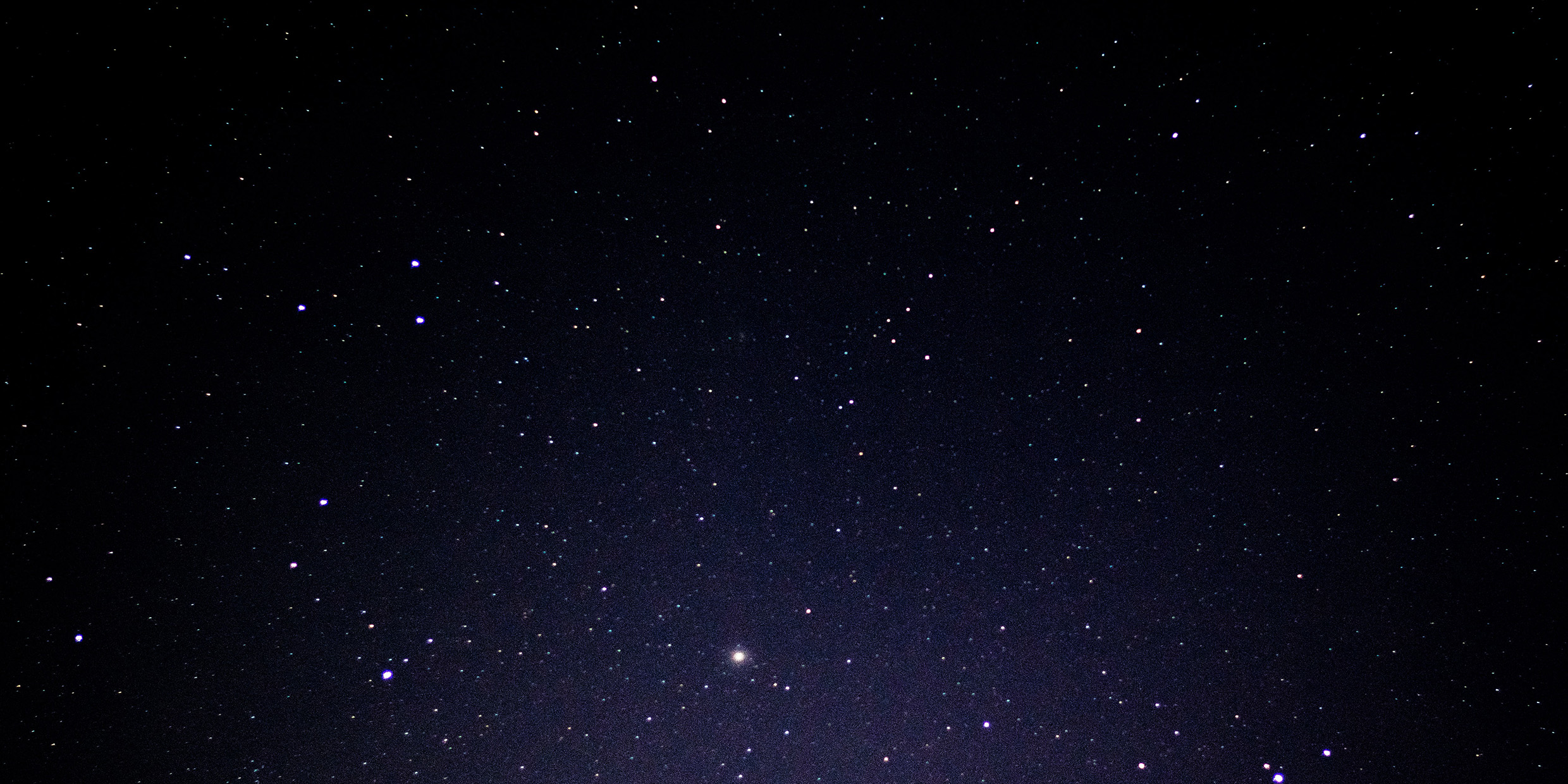Originally published 5 June 1989
Every astronomer and backyard stargazer who has ever looked into the night has made one of the most important observations in the history of astronomy. The night sky is dark! Stars shine in a black sky.
We take the darkness of the night for granted. Stars, galaxies, and radiant nebulas reveal the nature of the universe we live in. Night is a mere backdrop for luminous objects, like the black velvet cloth upon which a jeweler displays his glittering wares.
Or so we are inclined to think. But the darkness of night is a riddle that has long interested cosmologists. The absence of light in the space between the stars is as full of meaning as the stars themselves.
In 1610, Johannes Kepler received a copy of Galileo’s little book The Starry Messenger, containing the Italian scientist’s telescopic observations of the sky. Kepler protested Galileo’s claim that the universe was infinite and contained an infinite number of stars. If this were so, he wrote in a letter to Galileo, the entire celestial sphere would blaze with light as brilliantly as the sun.
In an infinite universe filled with stars, no matter which way we look our line of sight must eventually terminate on a star, just as a person in a wide forest must in any direction eventually see the trunk of a tree. Since the night sky is manifestly not as bright as day, the universe (concluded Kepler) cannot be infinite.
Olbers’ Paradox
Kepler’s argument was reasserted by Heinrich Olbers in 1826 and it has come to be known as Olbers’ Paradox: If the universe is infinite and uniformly sprinkled with stars, then there should be no night.
There have been many attempts to resolve the riddle. Some scientists protested that interstellar gas and dust would absorb the light of distant stars, but it can be shown that the absorbing matter would eventually become hot enough to reradiate the same energy and therefore maintain the brightness of the sky. The discovery that stars are clumped in galaxies also fails to resolve the riddle; Kepler’s argument can be applied to galaxies as well as stars.
In the June [1989] issue of Sky & Telescope magazine, astrophysicist Paul Wesson of the University of Waterloo in Ontario, Canada, takes up Olbers’ Paradox once again. He considers two ways to resolve the riddle: the expansion of the universe and the finite age of the galaxies. Both factors have been considered previously, in particular by E. R. Harrison of the University of Massachusetts.
According to present theories, the universe began 15 billion years ago in a ferocious explosion — the primeval fireball or Big Bang. The explosion didn’t happen somewhere; it happened everywhere. Space and time came into existence with the universe itself. Since the first moment of creation, the texture of space has been inflating, like the expanding surface of a balloon or a rising loaf of dough in the pan.
Galaxies formed early in the history of the explosion and they are carried apart with the expansion of space, like dots on the inflating balloon or raisins in the rising loaf. The expansion of the universe weakens the light of distant galaxies. As the galaxies race away from us, their light is stretched and cooled (this is called the red-shift of the galaxies, or Doppler effect). Wesson used a computer to evaluate the effect of expansion for all variations on the theory of the expanding universe, to see if expansion is enough to render the night sky dark. Conclusion: The expansion of the universe dims the Olbers light by about a factor of two, not enough alone to to account for the darkness of the night.
A young universe
Then what about the second way out of the riddle, the finite age of the galaxies? The universe began 15 billion years ago. Space may be infinite but time had a beginning. Because light travels at a finite velocity, there is a limit to the part of the universe we can see. We can’t see galaxies more than 15 billion light-years away because their light has not yet had time to reach us. Even in an infinite universe the number of galaxies we can observe is finite. The night sky is dark because the universe is young!
The space between the stars is indeed full of energy, but not enough to make the sky blaze with light. Wesson used his computer models of the universe to calculate the intensity of the background light from distant galaxies. It is too weak to be observed with Earth-bound telescopes (or with the human eye!), but it may be measured with special instruments in space, such as the COBE (Cosmic Background Explorer satellite) to be launched later this year.
Telescopes above the atmosphere allow us to see radiation that is absorbed by air. The COBE satellite will give us a fresh look at the light of the Big Bang — the glow of creation itself, cooled and dimmed by expansion — and perhaps even some hint of the first stars and galaxies forming. These new measurements will help us establish the precise scenario of creation.
But space telescopes are not necessary to do a little backyard cosmology. Anyone with eyes can see evidence for the Big Bang. Tonight, as you revel in the beauty of summer stars in a dark, moonless sky, celebrate creation. Stars glitter on a black cloth of night because the universe had a beginning.



